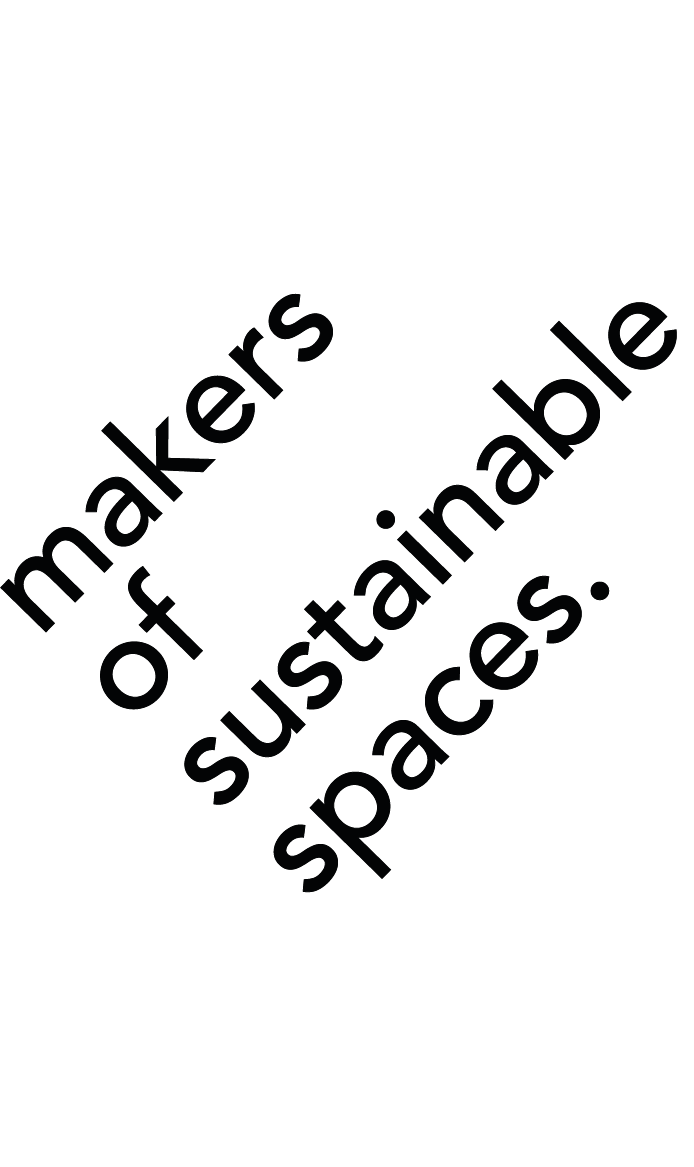MOSS LAB 2.0 Green Impact on Acoustics
Once again, plants have proven to enhance our day to day life! We have recently conducted MOSS LAB 2.0 with the University of Wageningen and Sorama where we looked into how plant species, substrate, plant combinations, and arrangements influence spatial acoustics.
MOSS LAB 2.0 was established to tackle one of the many challenges confronting post Covid-19 offices: noise! Since the pandemic, companies have embraced hybrid working, giving employees the flexibility to work remotely, while also creating a more seamless online platform for communication.
Although hybrid working opens doors to many opportunities, it can hinder employee concentration, productivity, and well-being due to excessive noise present in the office, especially when combined with the open-plan office layout.
At Makers Of Sustainable Spaces (MOSS), we continuously strive to improve the well-being and performance of building users So, for this challenge, we coined a team with six Masters (MSc) students from the University of Wageningen, two technicians from Sorama, and a project developer from COD to dive into the topic of plants, sound, and buildings. The University of Wageningen MSc students are specialized in plant science, biology, and plant biotechnology. Sorama is specialized in measuring and visualizing sound. COD is a real estate developer in Amsterdam As commissioner of the research question, MOSS guided the team in investigating the effects of plant properties and plant arrangements on acoustics in a hybrid office space.
The literature review carried out by the MSc students revealed that sound can be reduced by increasing sound absorption, which can be affected by the material thickness, porosity, density, position, airflow resistivity, and air gap thickness. It is found that the plant properties that help absorb sound are in the leaf characteristics: higher leaf density, coarser texture, more dominant angle of the leaves, as well as larger leaves, are favored.


With so many variables, it is most beneficial to mix various species of plants with the highlighted leaf characteristics in order to ensure the most optimal sound absorption.
Moreover, it is apparent that as most sound is absorbed in the substrate, it is ideal to use large plant containers and highly porous soil, where a mixture of perlite and coconut fibers is proven to perform best in absorbing sound. Perlite is a naturally occurring mineral that is added to garden soil to improve aeration, water retention, and drainage while coconut fibers can provide soil structure, drainage, and aeration.
MAKERS OF SUSTAINABLE SPACES
“THE ONLY WAY TO SUCCEED IN BUSINESS IS TO ATTRACT SMART CREATIVES AND PUT THEM IN AN ENVIRONMENT WHERE THEY CAN SUCCEED AT SCALE”
– Eric Schmidt, CEO of Google –


MOSS LAB 2.0 Team
Together with the Wageningen University ACT (Academic Consultancy Training), MOSS is working with a team of Masters’s students to explore, reveal, and unleash the impact of biophilic spaces. Our international team includes different disciplines, ages, nationalities, approaches to studies, and life views. Meet the team!
ACT TEAM
Process Coach | Michel Kropman
Controller | Luc Buvelot
Manager | Elena Ungureanu-Tangerman
Secretary | Leonie Nijs
Member | Nan Wang
Member | Ilva van Dam
Member | Ilse Biemond
Member | Isabel Baken
A total of five arrangements were tested: four plant arrangements (perimeter, scattered, divider, and circular) and an empty room with no plants. A combination of eight species of 40 potted plants including Kentia, Ficus lyrata, Caryota mitis, Raphis, Ficus bengamina, Schefflera amate, Schefflera aboricola were placed and rearranged in an office-emulated lab where the plants equated to 4.1% of the room’s total volume.
A DS-303 Omni-directional speaker emulated conversational office noises, while the Sorama CAM iV64, Sorama CAM1K acoustic camera, and NTI XL2 sound level meter measured sound. For each arrangement, three different parameters were tested: the reverberation time, the location of the reflections in the office space, and the level difference between the two sides of the office.
Following the research conducted, it can be concluded that plants in fact do have the ability to improve the acoustics in an office space and that scattering the plants across the office, around the tables and in the corners of the room, yields the best acoustic performance. This is due to the reverberation time which closest approaches the guidelines of the open office reverberation time. The scattered arrangement is effective at distributing reflections onto other locations compared to an empty office space. Lastly, the level difference between the two sides of the lab space for this configuration is almost the highest, closely approaching the configuration with the highest level differences.
Once again, plants have proven to enhance our day to day life! This being said, it is still worth further investigating to why the reverberation times of the four plant configurations did not show a drastic difference. This could be done by increasing the number of potted plants to raising the green volume to 8% as benchmarked by MOSS LAB 1.0.
If you are a researcher or institution who is interested in this topic, please email info@moss.amsterdam for research collaborations.








